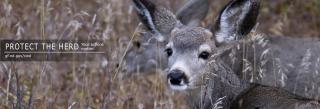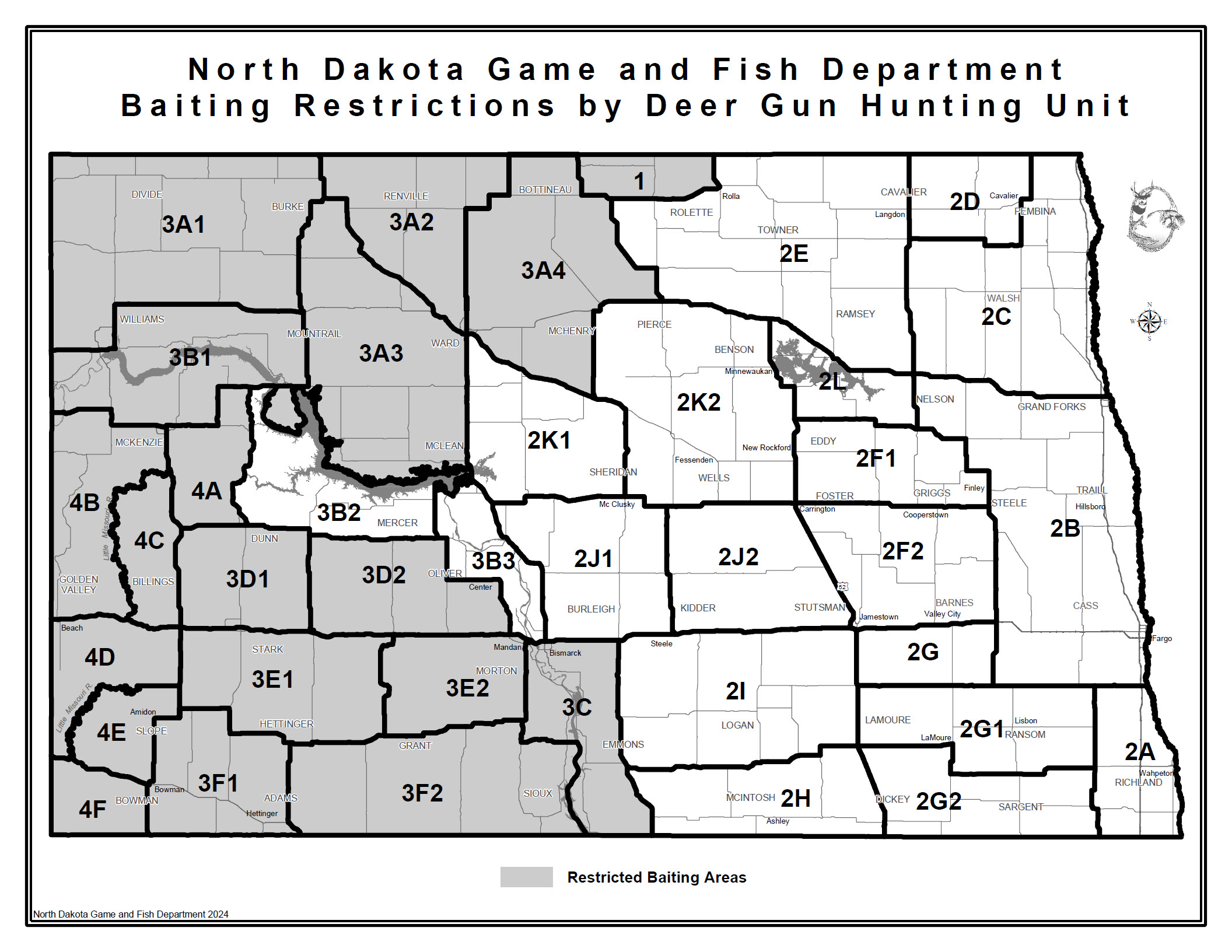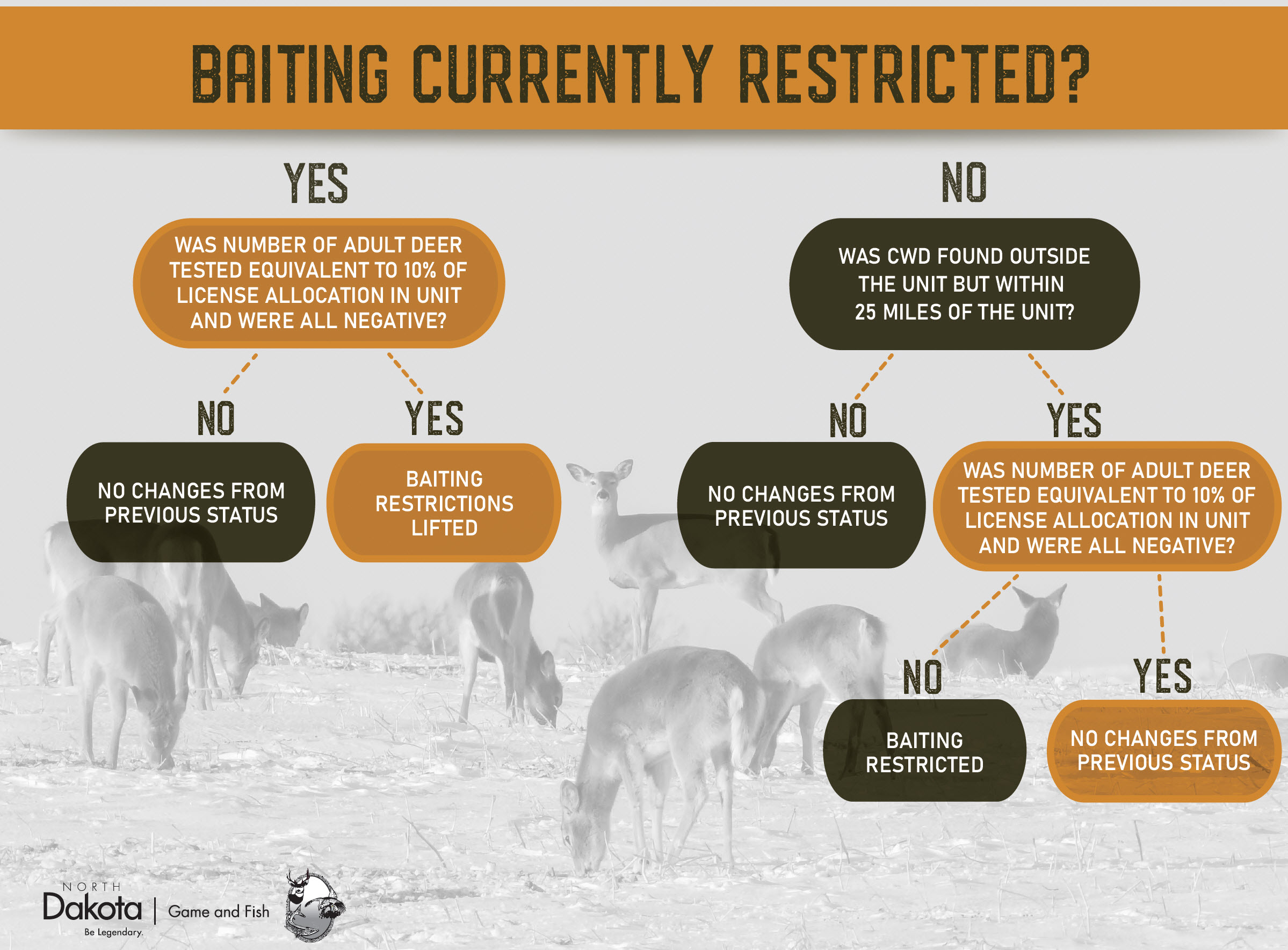

Chronic Wasting Disease
Chronic wasting disease is a fatal disease of deer, moose and elk that can cause long-term population declines if left unchecked. There is no treatment or cure, and once established in an area, it remains indefinitely. For these reasons, CWD poses a major threat to North Dakota deer, elk and moose and the future of hunting these animals.
Combating CWD is a long-term endeavor that requires committed, diligent effort from all North Dakotans who value these big game animals. Through our cooperative dedication to the cause, we can protect these important species and North Dakota’s hunting heritage.
CWD Regulations
Baiting Restrictions
It is illegal to hunt big game over bait (see CWD proclamation for a list of bait items), or place bait to attract big game for the purpose of hunting, in deer units 1, 3Al, 3A2, 3A3, 3A4, 3Bl, 3C, 3Dl, 3D2, 3El, 3E2, 3Fl, 3F2, 4A, 4B, 4C, 4D, 4E and 4F (2024-25 seasons).
It is also illegal to hunt big game over bait or place bait on any Department Wildlife Management Area.
CWD is a transmissible disease that can be spread directly from animal to animal, or indirectly through CWD-contaminated environments.
Baiting and feeding artificially increases how frequently deer come into contact with one another.
Restricting it will not stop natural congregating that occurs during some portions of the year, but it will decrease the overall risk of CWD spreading within an area by reducing the number, duration and intensity of unnatural congregations.
This is a common sense approach, backed by robust science and used by wildlife management agencies across the country.
Criteria for Lifting Baiting Restrictions
Following input from stakeholders through spring and summer of 2023, North Dakota Game and Fish Department officials implemented a management strategy that allows baiting restrictions to be removed in a unit if
- the number of adult deer equivalent to at least 10% of the gun licenses allocated in the unit are tested for CWD within a year, and
- all the results are negative.
If the sampling goal is not met or CWD is confirmed in the unit, the baiting restriction will remain.
(Click for larger image.)
Carcass Transport Restrictions
Hunters may transport the entire carcass of big game harvested in North Dakota outside of the gun unit where it was harvested. If transported out of the gun unit, the carcass waste (material left after processing), must be disposed of via landfill or waste management provider.
For animals harvested outside of the state, high risk carcass parts, as specified in the proclamation, cannot be transported into North Dakota.
Surveillance and Testing
2024 information will be posted once available.
Note: A number of states have established regulations or recommendations on the transportation of hunter-killed deer, moose and elk. Out-of-state hunters should be familiar with the regulations of the state in which they hunt. For more information on transportation regulations and recommendations in other states, see the CWD Alliance Web site at www.cwd-info.org.


